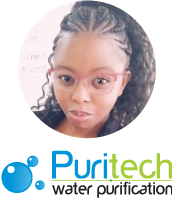Currently Empty: R0.00
Clean, safe drinking water is essential for our health and well-being. However, many water sources contain various contaminants that can pose serious health risks if left untreated. In this blog, we’ll explore five common water contaminants and effective methods for removing them, ensuring you and your family have access to clean and safe drinking water.
1. Bacteria and Pathogens:
Bacteria such as E. coli, Salmonella, and Campylobacter, as well as other pathogens like viruses and parasites, are common contaminants found in water sources contaminated with sewage or animal waste. These contaminants can cause gastrointestinal illnesses and other infections.
Removal Method: Chlorination, ultraviolet (UV) sterilization, and filtration are effective methods for removing bacteria and pathogens from water. Chlorine effectively kills bacteria and viruses when added to water in the correct dosage. UV sterilization exposes water to ultraviolet light, which destroys the DNA of bacteria, viruses, and parasites, rendering them harmless. Filtration systems equipped with fine mesh or ceramic filters can physically remove bacteria and parasites from water.
2. Heavy Metals:
Heavy metals such as lead, arsenic, mercury, and cadmium can leach into water sources from industrial runoff, mining activities, and corroded plumbing systems. Prolonged exposure to heavy metals can lead to serious health problems, including neurological disorders, kidney damage, and cancer.
Removal Method: Reverse osmosis (RO) filtration is highly effective at removing heavy metals from water. RO systems use a semipermeable membrane to filter out contaminants, including heavy metals, leaving behind clean, purified water. Activated carbon filters can also help reduce the concentration of certain heavy metals, such as lead and mercury, by adsorbing them onto the filter media.
3. Chlorine and Chloramines:
Chlorine and chloramines are commonly used disinfectants in municipal water treatment to kill bacteria and other pathogens. However, residual chlorine and chloramines in drinking water can impart an unpleasant taste and odor and may react with organic matter to form harmful disinfection byproducts (DBPs).
Removal Method: Activated carbon filtration is an effective method for removing chlorine and chloramines from water. Activated carbon filters absorb chlorine and chloramines, improving water taste and odor. Some specialized carbon filters are specifically designed to target chloramines, ensuring complete removal.
4. Pesticides and Herbicides:
Pesticides and herbicides, including atrazine, glyphosate, and chlorpyrifos, can contaminate water sources through agricultural runoff and groundwater infiltration. These chemical contaminants pose health risks, including hormone disruption, reproductive problems, and cancer.
Removal Method: Granular activated carbon (GAC) filtration is effective at removing pesticides and herbicides from water. GAC filters adsorb organic contaminants onto their porous surface, reducing their concentration in the water. Additionally, advanced filtration systems incorporating multiple stages of filtration, including GAC and micron filtration, can provide enhanced removal of pesticide residues.
5. Sediment and Particulate Matter:
Sediment, sand, rust, and other particulate matter can enter water sources through soil erosion, aging infrastructure, and natural deposits. These suspended solids can cause cloudy or turbid water and may harbor bacteria and other contaminants.
Removal Method: Sediment filtration is the most common method for removing suspended solids from water. Sediment filters trap particulate matter as water passes through them, improving water clarity and quality. These filters are typically made of materials such as spun polypropylene, pleated polyester, or ceramic, with varying degrees of filtration efficiency.
Conclusion:
Ensuring your drinking water is free from contaminants is essential for safeguarding your health and well-being. By understanding the common water contaminants and implementing effective removal methods, you can enjoy clean, safe drinking water for you and your family. Whether you’re dealing with bacteria, heavy metals, chlorine, pesticides, or sediment, there are proven water purification solutions available to meet your needs. Investing in a reliable water purification system will provide you with peace of mind knowing that your drinking water is pure, refreshing, and free from harmful contaminants.










